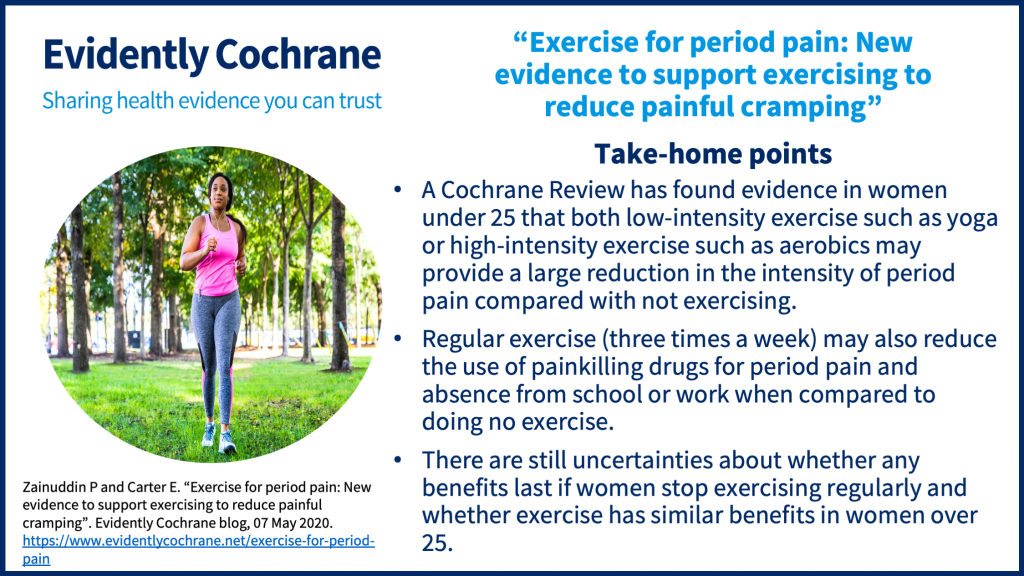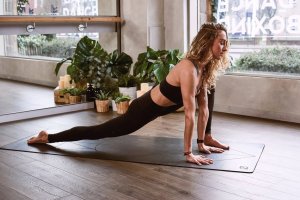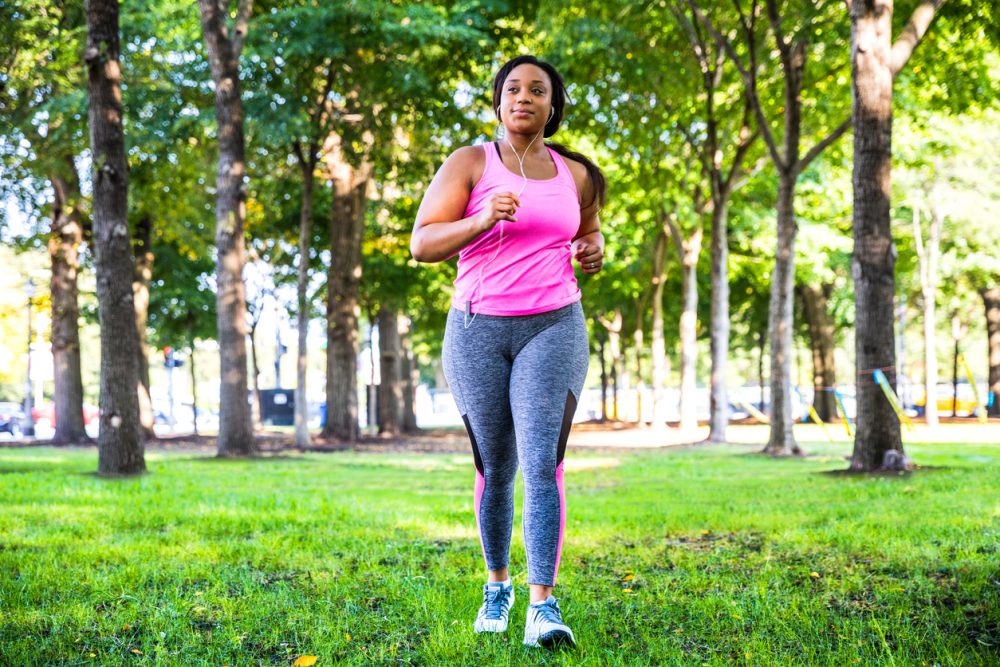In this blog for women who get period pain, Puteri Zainuddin (ST1 Obstetrician and Gynaecology doctor) and Emily Carter (ST5 Registrar in Obstetrics and Gynaecology) look at the latest Cochrane evidenceCochrane Reviews are systematic reviews. In systematic reviews we search for and summarize studies that answer a specific research question (e.g. is paracetamol effective and safe for treating back pain?). The studies are identified, assessed, and summarized by using a systematic and predefined approach. They inform recommendations for healthcare and research. on exercise for period pain and explore the underlying evidence to support exercising to reduce painful cramping.
Page last checked 26 June 2023.
Take-home points

Period pain, or dysmenorrhoea affects nearly all women at some point in their lives. Sometimes symptoms can become severe, affecting socialising, relationships and quality of life. It remains difficult for women to talk about. Up to 9 out of 10 women suffer dysmenorrhoea with about 1 in 10 cases described as severe (Abu Helwa et al, 2018; Zondervan et al, 1998).
Most women have their lives affected by period pain to some degree, be it missing school physical education or swimming classes, pain during parties or social engagements, or just suboptimal performance at work. There is a range of options available, from ‘grinning and bearing’ it, taking regular pain relief or looking at hormonal treatments to regulate and suppress the menstrual cycle.
As gynaecologists, we experience it as one of the key drivers for women to seek help in our clinics. We can help the vast majority of women to control their symptoms. Our treatmentSomething done with the aim of improving health or relieving suffering. For example, medicines, surgery, psychological and physical therapies, diet and exercise changes. recommendations are based on national guidelines (RCOG 2012) and our experienced judgement in particular cases. But what if there was a simple and effective option available mitigating the need for any medical treatment at all?

What we already know about period pain
Most period pain is ‘simple’ and does not have any underlying medical ‘cause’. This type of period pain is caused by increased chemicals (prostaglandins) in the womb lining which leads to painful cramping. Medicines such as Ibuprofen act to reduce painful cramping by reducing the prostaglandin levels, therefore medications of this type are recommended to manage pain symptoms (NICE 2018) (Marjoribanks 2015). Taking these medications in the longer term can be associated with stomach upset, so it is best to check with your doctor if you are taking them regularly.
Uncommonly, painful periods can be caused by an underlying gynaecological condition such as fibroids or endometriosis. If period pain is severe, not responding to pain relief, or associated with other symptoms such as painful sex then it is best to seek medical advice from your GP or gynaecologist, who can investigate further. They might suggest medical treatments in the first instance; oral hormonal contraceptive pills, a hormonal intrauterine device (coil) and in the most severe cases, hormonal suppression [RCOG, 2012]. Rarely, surgery might be required to diagnose or treat complications of long-term gynaecological problems; particularly if you want to have a baby.
Despite this, most women with painful periods find that their symptoms are controlled by lifestyle modification, simple painkillers and possibly hormonal contraceptives.
New Cochrane evidence on exercise for period pain
The Cochrane Review Exercise for dysmenorrhoea (September 2019) looked at all of the relevant evidence for exercise for period pain. The review looked at over 700 young women (under 25) with moderate to severe period pain. Nine out of the ten studies compared exercise to no exercise. Pain intensity was measured using the 100-point visual analogue scale (VAS): people are asked to mark their pain level along a line that ranges from ‘no pain at all’ to ‘unbearable pain’.
- This showed that both low-intensity exercise such as yoga or high-intensity exercise such as aerobics may provide a large reduction in the intensity of period pain compared with not exercising. Exercise may be effective in reducing period pain levels by 25mm on a 100mm scale, which is over twice the amount usually needed to show a ‘significant’ reduction in pain.
- Exercise was done for 45-60 minutes, three times a week.

The review also found that:
- It is uncertain whether exercise reduces back pain and fatigue, or improves your quality of life.
- Exercising for period pain may offer some reduction in usage of painkilling medicines and absence from school or work.
- There was no evidence from this studyAn investigation of a healthcare problem. There are different types of studies used to answer research questions, for example randomised controlled trials or observational studies. that exercising for period pain causes any harm.
- Whilst exercising for period pain helps, it is unclear if the benefits of exercise last after regular exercise is stopped.
- As the studies only looked at younger women, it is unclear if the same results apply to women over 25.
- The quality of evidence is rated as ‘low’, therefore more trialsClinical trials are research studies involving people who use healthcare services. They often compare a new or different treatment with the best treatment currently available. This is to test whether the new or different treatment is safe, effective and any better than what is currently used. No matter how promising a new treatment may appear during tests in a laboratory, it must go through clinical trials before its benefits and risks can really be known. are needed in order to confirm the findings.
As the reduction of pain described was so large, this gives women who suffer from period pain hope that their symptoms could be managed by exercise, which could be a simple lifestyle modification. However, as the certainty of the evidenceThe certainty (or quality) of evidence is the extent to which we can be confident that what the research tells us about a particular treatment effect is likely to be accurate. Concerns about factors such as bias can reduce the certainty of the evidence. Evidence may be of high certainty; moderate certainty; low certainty or very-low certainty. Cochrane has adopted the GRADE approach (Grading of Recommendations Assessment, Development and Evaluation) for assessing certainty (or quality) of evidence. Find out more here: https://training.cochrane.org/grade-approach is low, more trials are needed to confirm these findings both in women under 25, and older women.

Puteri Zainuddin’s biography can be seen below the blog.
Join in the conversation on Twitter with @DrEmilyClaire @CochraneUK or leave a comment on the blog. Please note, we cannot give specific medical advice and do not publish comments that link to individual pages requesting donations or to commercial sites, or appear to endorse commercial products. We welcome diverse views and encourage discussion but we ask that comments are respectful and reserve the right to not publish any we consider offensive. Cochrane UK does not fact check – or endorse – readers’ comments, including any treatments mentioned.
References and related resources (pdf).
Puteri Zannudin and Emily Carter have nothing to disclose.



[…] Exercise for period pain: New evidence to support exercising to reduce painful cramping-MAY 7, 2020-… […]
I have always found that exercise in the few days before a period alleviates discomfort. Sitting too much/lack of movement in the days before a period correlates with some pain in back, abdomen and legs around the beginning of a period. I am now in my 40s and this pattern does not seem t have changed.
Hi :)
I just exercised during my cycle. And indeed it did relieve my cramping pain while I was exercising, however, not long after I was done exercising the cramps returned. I see that the study also found that unclear results with lasting effects of cramp relief once regular exercise has ceased.
Thank you.
Hello,
I am 40 and have suffered from painful periods since I was a teen. Well, my primary care has always guided me to exercise 30 minutes a day. That’s challenging for me. So, In March when I turned 40 my period pains were so severe that I had to do something. I starred exercising for 15 minutes a day. Which includes 70 squats, 20 arm lifts and that’s it. My weight is 120. And boy have I felt a change for the better! I will admit sometimes I miss a day, but never 2 days. It’s increased my energy during my period, along with my iron pills, my body feels great and most importantly, I don’t have terrible gut wrenching pain during the first & third day of my cycle, like I use too. And my flow is No as heavy! So, if there is a study for 25 and older, I would love to participate! As exercising has made a world of difference for my monthly cycle!! Im just upset I took so many years to discover this. Disclaimer: Of course I’ve exercised in my 20s, & 30s however, I’ve never kept up a consistent routine like I have once I hit 40!!! Thank you for listening and confirming this important information for me! I sleep so much better at tonight too! Did I already say my body feels great as well!
Hi Jessica,
That’s great to hear! Well done for keeping up a consistent exercise routine – it’s not easy, I know!
Best wishes,
Sarah [Editor]
[…] it's true that exercise can reduce cramps and different period-related issues, the timing of your interval is not going to range in any […]
[…] it is true that exercise can reduce cramps and other period-related concerns, the timing of your period will not vary in any way regardless of […]
[…] your period. But bear with us. Exercising or simply moving your body, in general, helps to improve overall circulation and lessen muscular period cramps. The increased oxygen supply aids muscle […]